|
|
|
Sort Order |
|
|
|
Items / Page
|
|
|
|
|
|
|
| Srl | Item |
| 1 |
ID:
105189
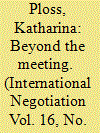

|
|
|
|
|
| Publication |
2011.
|
| Summary/Abstract |
Intercommunity dialogue encounters are a crucial tool for constructive conflict resolution. This research examines grassroots dialogue encounters with regard to the societal position of the participants, as well the situation `on the ground' as influential to the transfer process. Interviews in Northern Ireland and Kosovo with community activists stressed the effectiveness of personal characteristics of dialogue participants when it came to transfer. Moreover, the readiness - affected by socio-economic conditions as well as external/secondary conflict parties - of the peer group to listen to its participant seemed fundamental.
|
|
|
|
|
|
|
|
|
|
|
|
|
|
|
|
| 2 |
ID:
128864
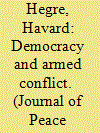

|
|
|
|
|
| Publication |
2014.
|
| Summary/Abstract |
The article reviews the literature on the relationship between democracy and armed conflict, internal as well as interstate. The review points to several similarities between how democratic institutions affect both conflict types. It summarizes the main empirical findings and discusses the most prominent explanations as well as the most important objections raised to the finding, empirically and theoretically. To a large degree, the empirical finding that pairs of democratic states have a lower risk of interstate conflict than other pairs holds up, as does the conclusion that consolidated democracies have less conflict than semi-democracies. The most critical challenge to both conclusions is the position that both democracy and peace are due to pre-existing socio-economic conditions. I conclude that this objection has considerable leverage, but it also seems clear that economic development is unlikely to bring about lasting peace alone, without the formalization embedded in democratic institutions.
|
|
|
|
|
|
|
|
|
|
|
|
|
|
|
|
| 3 |
ID:
124498
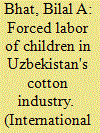

|
|
|
|
|
| Publication |
2013.
|
| Summary/Abstract |
Lack of skilled manpower, sophisticated technology and marketization are a new basis for child labor in central Asia, particularly in Uzbekistan. Agriculture , which comprises 40 percent of GDP of Uzbekistan, has present GDP of Uzbekistan, has turned backwards from the Soviet period when refined technology was provided when refined technology was provided by Russias.
|
|
|
|
|
|
|
|
|
|
|
|
|
|
|
|
| 4 |
ID:
126789
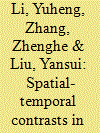

|
|
|
|
|
| Publication |
2013.
|
| Summary/Abstract |
For a long period following the establishment of People's Republic of China in 1949, urban and rural areas were treated separately and differently. Since 1978, China has experienced over three decades of rapid economic growth, with annual growth rates of over 9 per cent. However, despite this "economic miracle", the country has also witnessed ever-enlarging urban-rural inequalities across a range of indicators such as income, education, medical care, provision of infrastructure and social insurance. For example, while the per capita urban household income increased from 343 yuan in 1978 to 13,041 yuan in 2007, over the same period the per capita rural household income increased from 134 yuan to only 3,998 yuan. (1) A cluster of studies that investigated urban-rural inequalities in China have attributed the inequalities to factors such as a dualistic urban-rural structure, (2) urban-biased development strategy, (3,4) market forces (5) and taxation. (6) Urban-biased policies and related measures like the household registration system (hukou) were initially formulated on the basis of the typical socio-economic conditions in China in the period after 1949. These policies and measures have, however, intentionally diverted resources (capital, labour and materials) from rural to urban areas, and induced greater urban-rural inequality in China.
|
|
|
|
|
|
|
|
|
|
|
|
|
|
|
|
| 5 |
ID:
124441
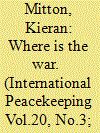

|
|
|
|
|
| Publication |
2013.
|
| Summary/Abstract |
The Sierra Leone civil war of 1991-2002 has widely been regarded as stemming from the desperate political and socio-economic conditions that affected the country's youth. Following the end to hostilities, there has been great concern to address youth grievances as a means of consolidating peace and stability. There have been frequent warnings in UN, NGO and academic reports of the dangers of limited progress in this regard, and it has been suggested that persistent pre-war conditions are undermining ex-combatants' investment in peace and increasing risks of a return to conflict. However, since 2002 Sierra Leone has experienced relatively low levels of violence. This article seeks to make sense of this seemingly propitious outcome. Informed by interviews conducted with ex-combatants between 2008-2012, it argues that risks of a return to arms have been exaggerated. Nevertheless, economic and political conditions continue to reconnect ex-combatants with violence in the context of 'peacetime.'
|
|
|
|
|
|
|
|
|
|
|
|
|
|
|
|
|
|
|
|
|